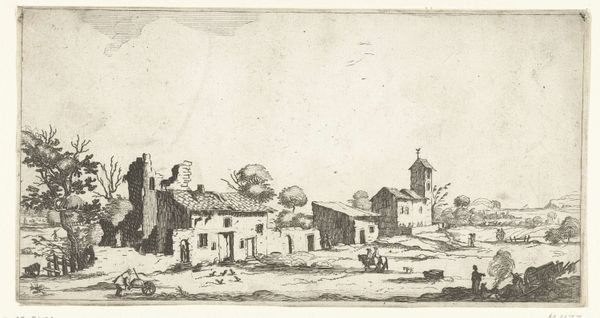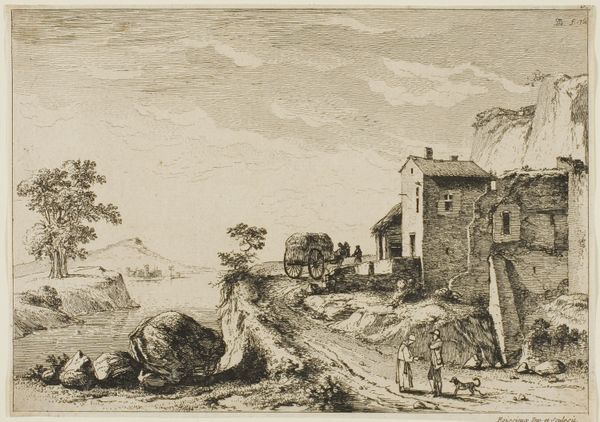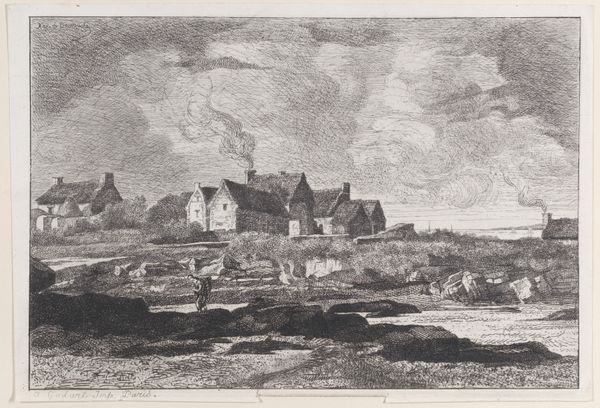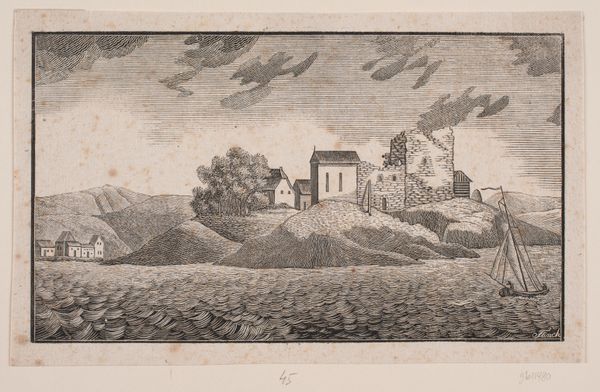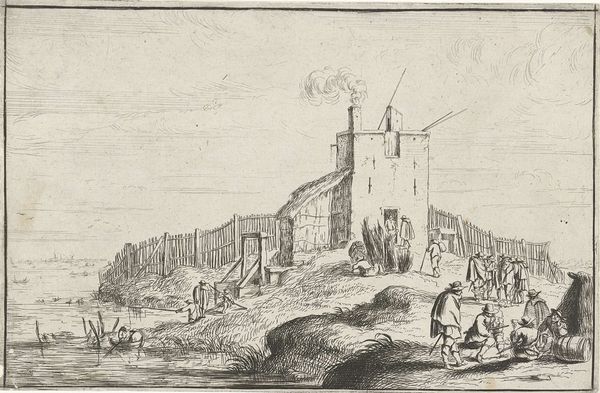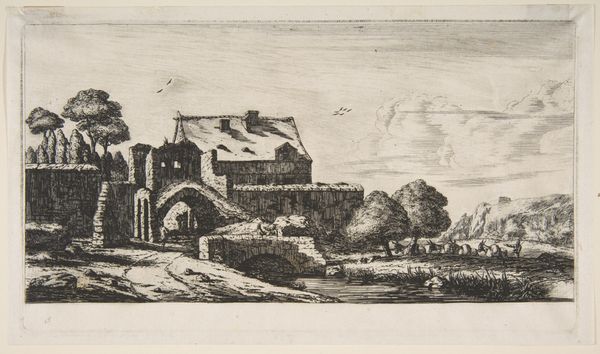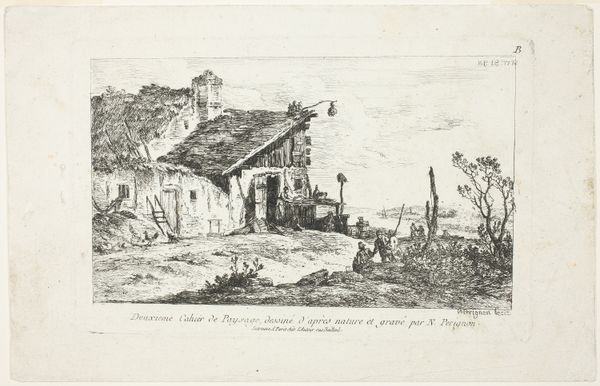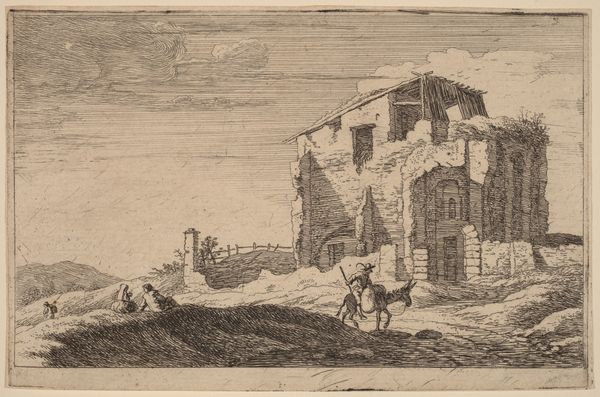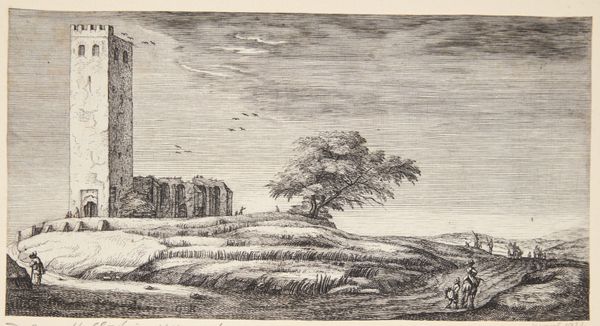
print, etching
#
amateur sketch
#
toned paper
#
light pencil work
# print
#
pen sketch
#
etching
#
pencil sketch
#
charcoal drawing
#
pencil drawing
#
pen-ink sketch
#
pencil art
#
watercolor
Dimensions: 114 mm (height) x 220 mm (width) (bladmaal)
Editor: Here we have Geertruyt Roghman's etching, "Den nye kirke ved Muiderberg," created sometime between 1625 and 1657. It depicts a rural scene with a church, some figures, and grazing cows, all rendered with very delicate lines. The mood seems peaceful, almost melancholic. What do you see in this piece? Curator: I see a landscape imbued with the social and political tensions of its time. While seemingly a simple depiction of rural life, consider the context: The Dutch Golden Age, a period of immense economic growth, but also intense religious and political conflict. Notice the church. It isn't grand or imposing, but rather humble, almost vernacular in its architecture. Editor: Yes, it looks quite modest. Curator: Precisely. How might this deliberate modesty reflect the shifting religious landscape of the time? The Reformation challenged established hierarchies. Roghman, as a female artist in this period, what power structures do you think she was responding to by documenting them? Editor: It’s interesting you mention that, I hadn’t really considered that this was documenting the shift in religious values in the area…It feels like it might also be drawing attention to rural life. Curator: Exactly! Roghman is capturing everyday life rather than the typical heroic narratives which elevate some experiences above others. It asks, whose stories are being told? Whose lives are being deemed worthy of representation? Perhaps this seemingly simple landscape holds a quiet, but powerful, feminist statement. Editor: I never would have considered those angles. I’ll definitely think differently about etchings going forward! Curator: Excellent. Art invites dialogue with our present; a lens to examine history and envision more inclusive futures.
Comments
No comments
Be the first to comment and join the conversation on the ultimate creative platform.
